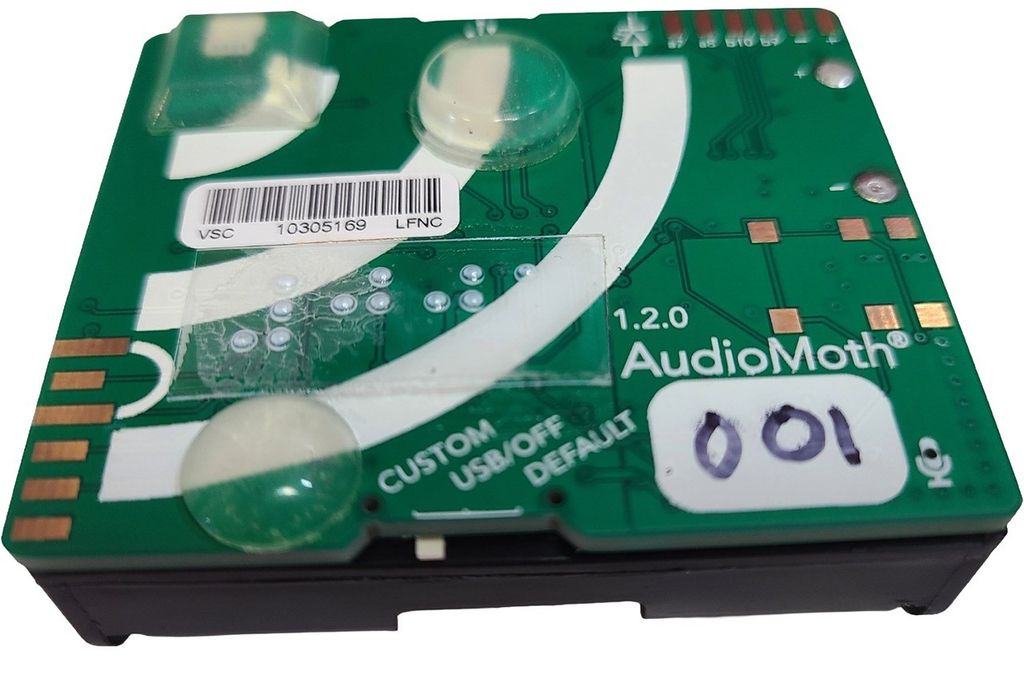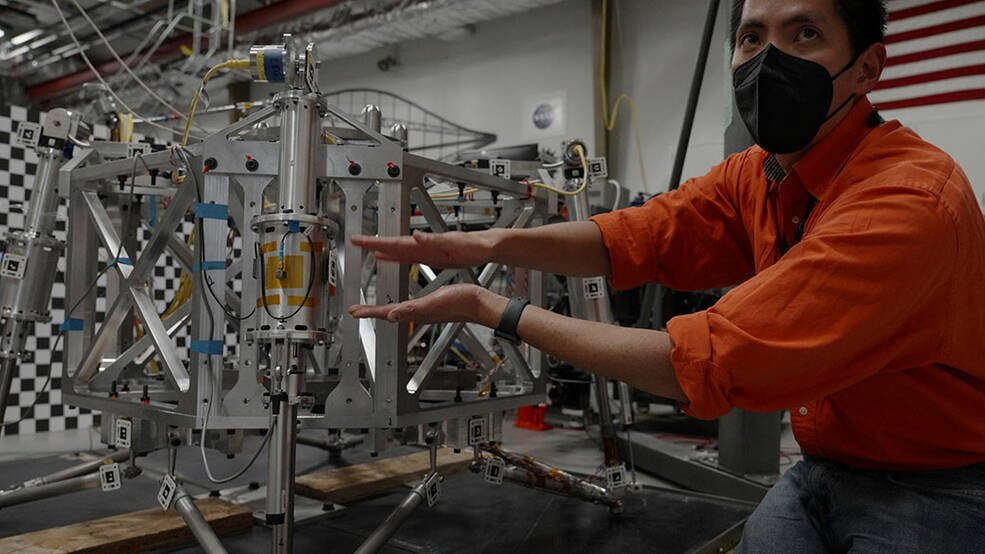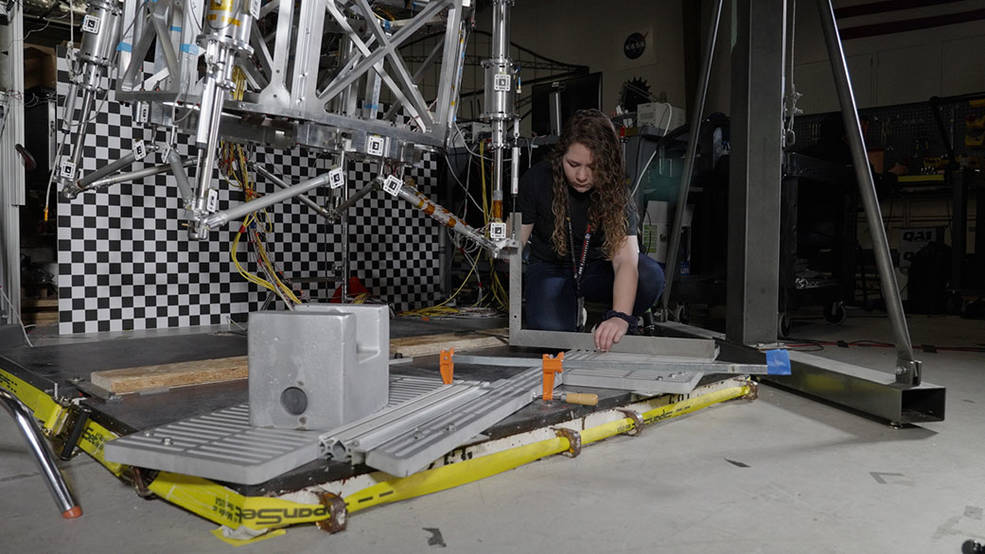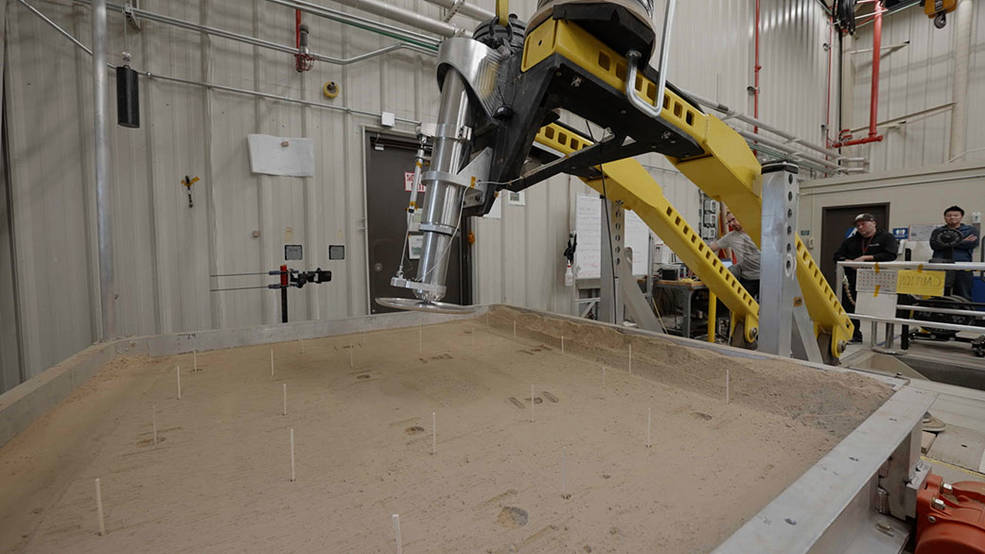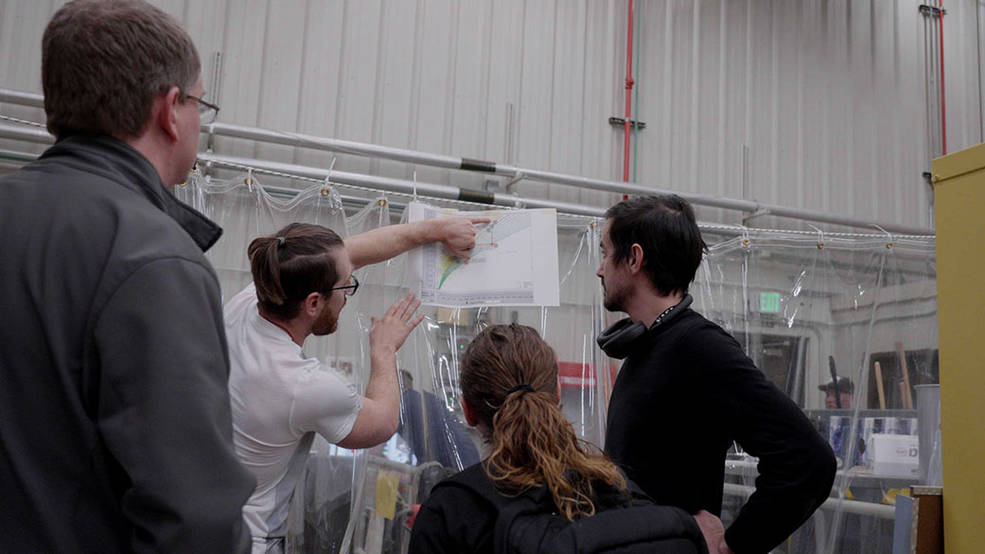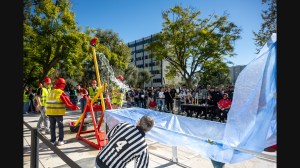Sturdy legs are needed to absorb the impact of the heaviest spacecraft to ever touch down on the Red Planet.
NASA’s Perseverance rover continues to rack up tubes filled with rock core samples for the planned Mars Sample Return campaign. The joint effort by NASA and ESA (European Space Agency) seeks to bring scientifically selected samples back from Mars to be studied on Earth with lab equipment far more complex than could be brought to the Red Planet. Engineers are busy designing the Sample Retrieval Lander that would help bring those samples to Earth. As part of that effort, they’ve been testing prototypes of the lander’s legs and footpads at NASA’s Jet Propulsion Laboratory in Southern California.
NASA is taking what it has learned over decades of successful Mars landings and applying those lessons to the Sample Retrieval Lander concept, which would be the largest spacecraft yet to land on Mars – as much as 5,016 pounds (2,275 kilograms). Along with relying on next-generation parachutes and 12 rocket engines to slow the spacecraft’s descent to Mars, the lander would need its legs to help absorb the impact of touchdown.
The spacecraft would carry a rocket that would launch Perseverance’s carefully packaged samples to an awaiting orbiter. An 8-foot (2.5-meter) robotic arm, to be provided by ESA, would load those sample tubes into the rocket. The lander could carry up to two mini-helicopters to serve as backups to retrieve tubes deposited in a sample depot. So the lander needs to be hefty.
To understand how energy would be absorbed during landing, JPL engineers conducted drop tests earlier this year that will inform the design and subsequent tests. One series of tests involved dropping a three-eighths scale early-concept lander model onto a hard floor, while the other centered on slamming a full-size footpad into simulated Martian soil. The team can apply what they observe during testing as they refine the design.
Starting Small
“There’s already a night-and-day difference between this lander and the design we started with,” said Morgan Montalvo, a JPL engineer working on the tests.
The team has to think of every possible landing scenario, including what would happen if the spacecraft touched down at an angle and “stubbed a toe” on a rock. To try and create such a challenge during one series of tests, they dangled a prototype from a pendulum that sent the mini-lander to the ground at an angle. Cameras on tripods ringed the landing surface, a large black metal plate on the floor. A low guardrail doubled as the rock.
Montalvo called out a 3-2-1 countdown, and the lander swooped down with a bang, slamming into the guardrail. When the team studied the high-speed video later, they were surprised to find a perceptible wobble in one of the leg’s main struts. Increase the lander’s size, and this wobble would be even more noticeable. In response, stronger flight struts will be designed to handle those forces.
The team has also tested the lander’s “load limiters” – steel rods connecting its chassis to its legs. When the legs move during touchdown, the rods are forced to bend, absorbing some impact. The limiters were used on past landers like InSight, but they’re bigger on this prototype and will be even bigger on the final design.
“You’d never be able to bend these steel rods with just your hands,” Montalvo said. “It’s pretty insane seeing just how much force goes into them, bending them nearly in half after a drop.”
Heavy-Footed Spacecraft
Testing of the lander’s full-size foot pads has been taking place in a box filled with 10,000 pounds (4,536 kilograms) of powdery, Mars-like soil. About 16 inches (41 centimeters) in diameter, the flat, round footpad attaches to an assembly with nearly a half-ton of iron weight plates.
Patrick DeGrosse, the test bed lead, kept watch during one test as the lander foot plunged into the soil, leaving a deep indentation while tossing a cloud of dust. The impact shook the walls of the building. Afterward, high-speed cameras showed how energy radiated out from the pad.
“We don’t want the lander’s feet to sink so far that the bottom of the lander hits the surface,” DeGrosse said. “And we want to make sure the lander is very even on the surface. It needs to be sturdy, because the lander is also a platform for the rocket to lift off from.”
After each test, DeGrosse rebuilds the soil bed 4 inches at a time, tamping down the material to make sure it’s compressed the way scientists expect it to be on Mars. The conditions also need to be consistent for the team to understand how the footpad interacts with the soil. So DeGrosse repeats this time-consuming process four times a month.
“You have to rebuild Mars multiples times to do this test,” he said.
Media Contact
Andrew Good
Jet Propulsion Laboratory, Pasadena, Calif.
818-393-2433
andrew.c.good@jpl.nasa.gov
Karen Fox / Alana Johnson
NASA Headquarters, Washington
301-286-6284 / 202-358-1501
karen.c.fox@nasa.gov / alana.r.johnson@nasa.gov
2023-117

















